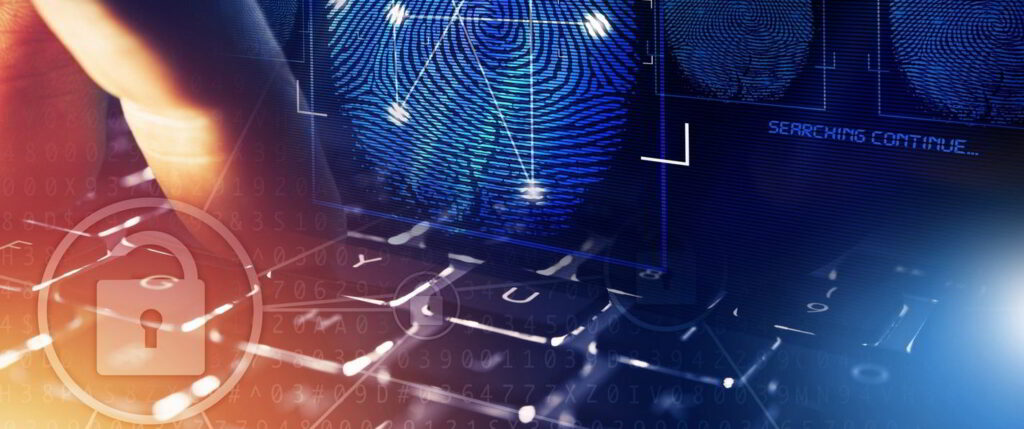By Arsenios Sakellaris,
Presumption of Innocence
According to Article 66 of the Rome Statute of the International Criminal Court (2011), everyone shall be presumed innocent until proven guilty, before the Court in accordance with the applicable law. This, of course, is a presumption which is stated in other international conventions too, such as the International Covenant on Civil and Political Rights and the European Convention on Human Rights. In order to be found guilty, it is, of course, necessary for the prosecuting authority to present the relevant evidence. As evidence can be described, it is the available body of facts or information indicating whether a claim is valid or not. Specifically, digital evidence is any probative information stored or transmitted in digital form that a party to a court case may use at trial.
Digital evidence
As technology evolves, so do the sources of digital evidence. To be more specific, they can be divided into three categories, which are the Internet, computers, and portable devices. Information gathered via online conversations, emails, message boards, chat rooms, file sharing networks, and intercepted communications is among the evidence received from the Internet. Message boards and chat rooms contain mountains of information both in real-time, as well as in archives. Computers are a repository of information with evidence obtained using special extraction methods. Though information may overlap with Internet sources, computers provide many unique and notable pieces of evidence, including timestamps, IP addresses, information about VPNs, and MAC addresses. In regard to portable devices now, these include information sourced from smartphones, tablets, and other handheld devices or gadgets. Because of society’s reliance on mobile devices, they have emerged as the primary source of digital evidence in a plethora of court proceedings. It is worth noting that the above sources also include devices such as sensors and screens at vehicles, cameras, drones, smart TVs, and the like.
Digital forensics
The use of digital evidence has increased in the last decade as courts have allowed the use of e-mails, digital photographs, ATM transaction logs, word processing documents, instant message histories, files saved from accounting programs, spreadsheets, internet browser histories, databases, the contents of computer memory, computer backups, computer printouts, Global Positioning System tracks, logs from a hotel’s electronic door locks, and digital video or audio files. Because of these, digital forensics’ role in criminal procedural law is becoming more and more relevant. Digital forensics, specifically, has been defined as the use of scientifically derived and proven methods towards the identification, collection, preservation, validation, analysis, interpretation, and presentation of digital evidence deriving from digital sources to facilitate the reconstruction of events being in nature criminal. Furthermore, with the changes in big data and the latest technology updates, digital forensics investigation methods face major challenges at the time of practical implementation. Digital forensic challenges are categorized into two major heads, both in the technical and legal domains.

Technical challenges
As technology develops, criminals are also developing with it. Forensic tools are used by digital forensic professionals to collect shards of evidence against offenders. Similarly, criminals use such tools for hiding, altering, or removing the traces of their crime. In digital forensics, this process is called the “anti-forensics technique”, which is considered a major challenge in the digital forensics world. The most known anti-forensics techniques, which digital forensics should take seriously into consideration, are covert channel, encryption, steganography, data hiding in storage space, data archiving, skill gap, and operating in the cloud.
A covert channel is a communication protocol that allows an attacker to bypass intrusion detection techniques and hide data over the network. In this way, it is used by the attacker for hiding the connection between him and the compromised system. Encryption helps criminals to hide information that proves their crimes from unauthorized users. The same happens with steganography but in a different way of hiding the corresponding information inside a file, without changing its outer look. Moreover, data hiding in storage space allows, essentially, criminals to hide chunks of data inside a storage medium in invisible form by using system commands and programs. The same implies to operating in the cloud, while simultaneously archiving data helps criminals delay the procedure of archiving data analysis by making a disk larger. Lastly, skill gap strengthens the impossibility for investigators to be up to date because of the need to deal with new devices or systems. In these ways, as anyone would be able to notify, the role of forensic experts and prosecutors is becoming more and more important for the proper and smooth procedural operation of a trial.
Legal challenges
Taking as an example the International Criminal Court, the legal challenges that digital evidence and its increase of use bring in the process of a trial are many. According to the applicable legal framework, particularly due to Article 21 of the Rome Statute of the International Criminal Court, the Court shall apply in the first place the Statute and its Rules of Procedure and Evidence in the second place the rules of international law and in the last one the general principles and the national laws of the member States. Rule 64 stipulates also: “Evidence ruled irrelevant or inadmissible shall not be considered by the Chamber”.

Naturally, the first rule of admissibility is the legality of the acquisition of the evidence. This entails determining if the evidence was collected with the proper permission. Authorization tools include consent, search warrants, and exigency. Consent is directly related to privacy issues. The introduction of privacy legislation has created uncertainty in digital forensics about what is permissible behavior in collecting and retrieving personal information. In the European Union, for instance, the General Data Protection Regulation 2016/679 (GDPR) poses strong barriers to the processing of personal data, which firstly requires the person’s consent. Moreover, consent is, in many cases, given willingly by the person or party concerned to the investigators to access a property, area, or personal effects, such as electrical devices, to help with their investigations.
Also, the power of digital evidence gathering is given of course in the form of a warrant to the investigating officer too. However, a digital investigation could present problems when evidence of other crimes is identified while investigating another. In this case, a second warrant has to be obtained before the evidence can be used to charge the accused person. An exception to the rule of having a warrant constitutes a situation of exigency, which entails a situation that presents a level of urgency requiring investigators to carry out a search.
Another issue that arises from this, from the time the digital evidence is admissible, is for how long digital evidence can be preserved, especially when a law case is able to live for more than 50 years, due to the fact that technology advances more and more quickly. Article 69, paragraph 7 of the Statute of Rome Statute of Criminal Court states clearly: “Evidence obtained by means of a violation of this Statute or internationally recognized human rights shall not be admissible if: (a) The violation casts substantial doubt on the reliability of the evidence; or (b) The admission of the evidence would be antithetical to and would seriously damage the integrity of the proceedings”. However, the common law of states is the rule of lifting the ban on the use of illegal evidence when the already challenged laws are clearly superior to those of the accused.
Furthermore, as well as the relevancy of digital evidence is concerned, the authenticity of digital evidence is a matter of significance. As time has passed, the truth is that courts became more familiar with digital documents, backed away from higher standards, and admitted that electronic information should be treated as any other record. However, a common attack and problem on digital evidence is that digital media can be easily altered. The more technology improves, the more the proponent of digital evidence must lay the proper foundation and guarantees of reliability. Digital forensic experts need, in this way, to be skilled in extracting data from multiple sources without modifying them and preserving the source of evidence for authenticity and integrity.
Last but not least, digital evidence can sometimes cause the rise of probative problems. The accused could claim that the data provided in the digital world are different from those in the physical world. This is a theme, of course, whose complexity and importance might be more obvious with the impending official launch of the metaverse. Undoubtedly, metaverse would be an iconic digital interaction form among people where possible criminal elements could be found. However, its technical, electronic, and edited, even by the person himself, character is something that should matter the enforcer of the law.

Conclusion
It can be a common assumption now that digital evidence and its increase bring lots of challenges in the procedural aspects of a trial, essentially in the technical and legal fields. Society in general, and the international legal world in particular, should take the appropriate measures and review the legislation accordingly. If this is achieved, it really will be proved that digital tools are the perfect means to evidence the accusations thrown to criminals.
References
- International Criminal Group, Rules of Procedure and Evidence, 2013, icc-cpi.int, Available here
- International Criminal Group, Rome Statute of the International Criminal Court, 2011, icc-cpi.int, Available here
- International Covenant on Civil and Political Rights – Human rights at your fingertips – Human rights at your fingertips, humanrights.gov.au, Available here
- Council of Europe, European Convention on Human Rights, echr.coe.int, Available here
- Eoghan Casey, Digital Evidence and Computer Crime, 3rd Edition, published by Academic Press, 2011
- Handbook of Digital Forensics and Investigation, edited by Eoghan Casey et al., published by Academic Press, 2010
- Vishal R. Ambhire, Dr. B.B. Meshram, Digital Forensic Tools, in IOSR Journal of Engineering, 2012, vol. 2, pg. 392-398, iosrjen.org, Available here




